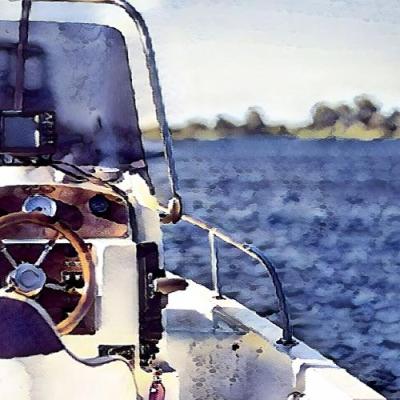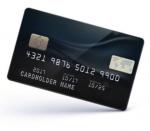So, whether you’re looking to finance a small fishing boat or a luxury yacht, read on to learn more about how boat financing works.
Boat loans operate just like any other type of loan – you borrow money from a lender and make monthly payments until the loan is paid off. The loan can be used to finance the purchase of a new or used boat, large or small ... and the terms of the loan will vary depending on the lender.
The different types of boat loans available
There are a few different types of loans available in Australia to finance a boat - including both secured and unsecured loans.
Secured Boat Loans
The most popular boat financing option is a secured boat loan, where the boat is used as collateral against the loan. This type of loan usually comes with a lower interest rate and can be easier to qualify for than an unsecured loan. Secured Boat Loans come in various forms - the most common being hire purchase & asset leasing.
The type of secured boat loan most suitable for you will depend on your personal circumstances - including whether you have a trade-in and/or you want to pay an upfront deposit on the loan - and/or a balloon payment at the end of the loan term.
When you sell or otherwise dispose of your boat in the future, you will be required to pay out a balance owing on the loan in full from the proceeds of the sale. If you trade in your boat to buy a new one, it is usual to refinance any balance remaining on the old loan in the finance for the new boat.
Unsecured Boat Loans
Another popular way to finance your boat purchase is with an unsecured loan ... i.e. a personal loan.
Personal loans don't require any collateral & can be used for any purpose, including financing a boat. his type of loan usually comes with a higher interest rate, but can be a good option if you want more flexibility and prefer not to put up collateral against the loan.
Because the boat is not used as collateral for the loan, the boat is 100% yours to sell or trade - without the need to pay out the loan.
Using your home equity
An often overlooked, but very efficient and inexpensive way of financing a boat is by using your home equity. Borrowing against your home equity usually attracts the lowest interest rates
If you don't already have a mortgage with a built-in line of credit or offset account that you can access, and assuming you have enough equity in your home, you could get a home equity loan - or home equity line of credit (HELOC) to finance the purchase of a boat.
Like a personal loan, a home equity loan provides a lump sum of cash and you make fixed monthly payments over a set period. A HELOC would give you access to a line of credit that you could borrow from as needed and then make monthly payments, similar to a credit card.
To get started, you would need to contact your mortgage lender and inquire about either type of loan. They will likely require an appraisal of your home to determine how much equity you have available. Once approved for the loan, you can then use the funds to purchase your boat.
A specialist Boat Loan Finance broker can help you determine the best option when it comes to choosing the type of boat financing that would best fit your needs.
The Boat Loan application process
It is a good idea to get pre-approved for a loan from a financial institution before you go seriously boat shopping. The majority of people don't apply for a boat loan until after they've chosen a boat - creating unnecessary time pressures on getting the loan and limiting the car financing options. By getting a pre-approved boat loan, on the other hand, you will have the confidence to go car shopping with a firm budget, the finance already dealt with and much more control over price negotiations with the vendor/dealer.
Whether you want a boat loan approved or pre-approved, the requirements are much similar. The boat loan application process might seem daunting, but it doesn't have to be. Here's a quick rundown of what you can expect when you apply for a boat loan.
First, you'll need to gather some basic information about yourself and your finances. This includes things like your income, assets, debts, and credit history. You'll also need to have a down payment ready - most lenders will require at least 10% of the purchase price as a down payment.
Once you have all of your information together, you'll need to fill out a loan application. This will give the lender a chance to review your finances and see if you're a good fit for a boat loan.
The lender will then run a hard credit check to see your financial history and creditworthiness.
If you're approved for the loan, you'll be given a loan agreement that outlines the terms of the loan, including the interest rate, monthly payment amount, and repayment schedule.
When you have found the right boat and negotiated the purchase price with the seller, the lender will then disburse the loan funds directly to the seller (or optionally to you if it's an unsecured personal loan). You will then make scheduled monthly payments to the lender until the loan is repaid in full.
What you need to qualify for a Boat Loan
There are several factors taken into account when a lender is assessing your loan application and the eligibility criteria vary from one loan product to the next. Aspects assessed by the lender can include your employment (current employment, employment history, job stability, etc), your income and expenses, your assets and liabilities, your age, how you conducted any other loans that you've had (past and present), your credit history ... and even your postcode.
To take most of the pain out of the exercise, we provide you with a quick, easy and completely free online Boat Loan Eligibility Assessment to help find out if you qualify without submitting a formal boat financing application with a lender. No charge and obligation-free. One of our specialist Boat Loan Finance Brokers can then guide you through the rest o the process.
Published: Thursday 13th October, 2022
Last updated: Friday 20th January, 2023









